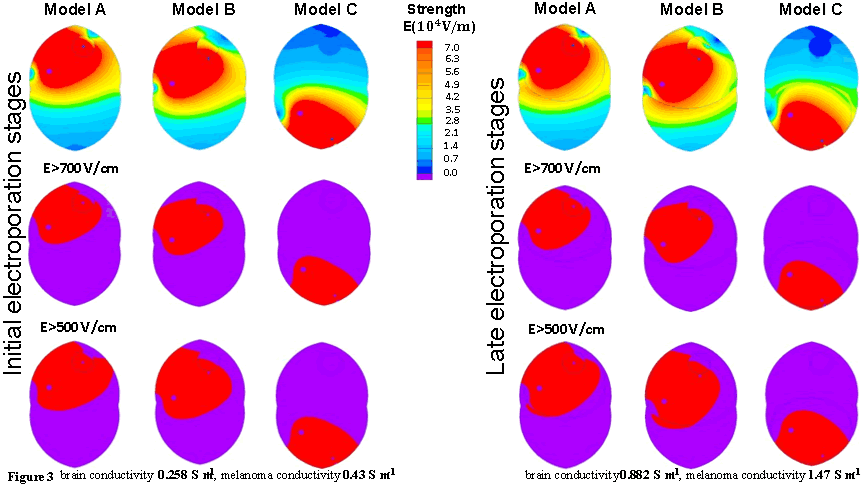Electroporation biopsy
QuickField simulation example
The performed numerical simulations allow to get an initial understanding of tissue areas from which e-biopsy could potentially collect the intracellular molecular markers released by electroporation. If the electric field strength thresholds for the tissues are known, the developed simulations could indicate the fractions of tumors that are electropermeabilized.
Problem Type
Plane-parallel multiphysics problem of DC Conduction coupled to Heat Transfer.
Geometry
Given
Brain electrical conductivity 0.258 S/m, melanoma electrical conductivity 0.43 S/m.
Reversible and irreversible electroporation thresholds for the brain are 500 V/cm and 700 V/cm respectively.
E-biopsy was performed using a combination of high-voltage short pulses 1000 V @ 40 μs with low-voltage long pulses 50 V @ 15 ms.
Pulses frequency is 4 Hz, number of pulses is 40.
Electric and thermal properties of the mice healthy brain tissue and melanoma tissue used in numerical simulations you can find here: https://doi.org/10.1371/journal.pone.0265866.s001
Task
Study the distributions of the electric fields in the brain tissue at different positions of the needle electrode.
Results
Electric field distribution:

Joule heating of the brain during the application of pulsed electric fields for e-biopsy

- Download simulation files (files may be viewed using any QuickField Edition).